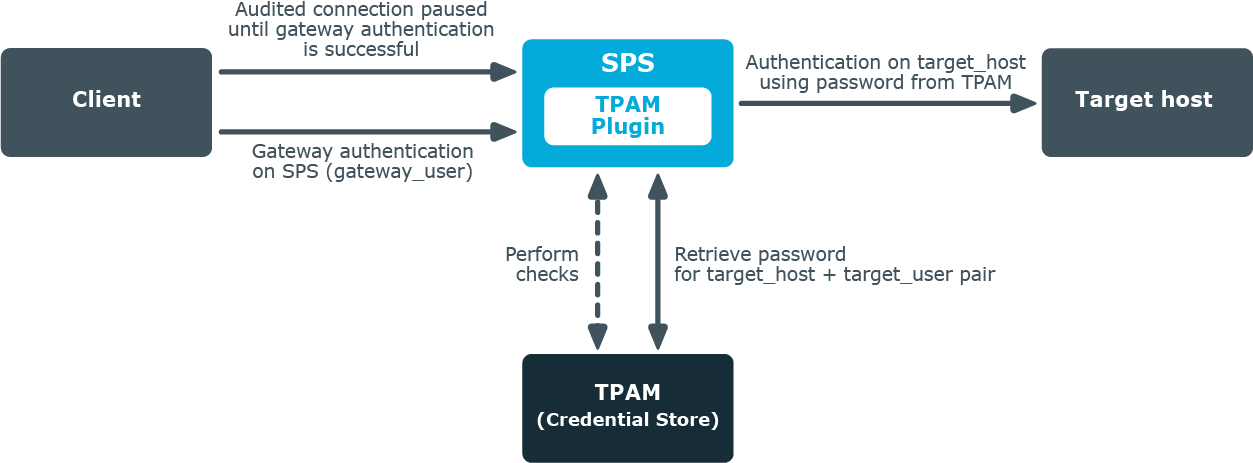|
|
NOTE:
This tutorial describes the deprecated version of the plugin. To upgrade your deprecated plugin for One Identity Safeguard for Privileged Sessions 6.0, see Upgrading plugins for One Identity Safeguard for Privileged Sessions version 6.0. |
This tutorial describes how to connect your One Identity Safeguard for Privileged Sessions (SPS) with TPAM using a plugin to automatically retrieve passwords.
Users wishing to access a target host are able to authenticate themselves without actually having access to the credentials required to access that host. Passwords are retrieved by SPS from TPAM using a plugin, with SPS impersonating the authenticated user and TPAM acting as the repository of user credentials (a Credential Store in SPS terminology).
This automatic password retrieval is crucial as this method protects the confidentiality of passwords, enabling you to protect critical assets and meet compliance requirements.


